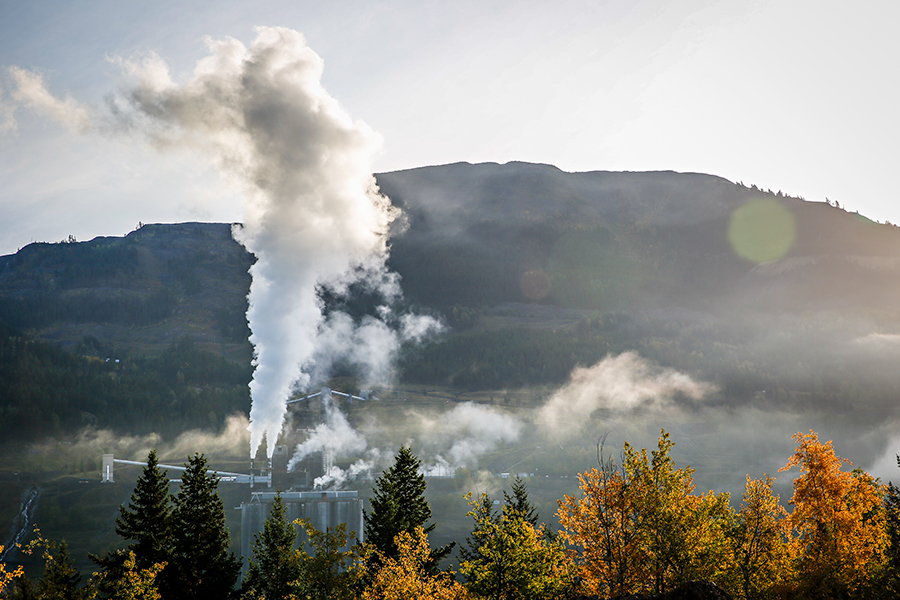EPA Concerns Intensify Over Transboundary Mining Pollution
With mining expansions underway, environmental officials report ‘troubling findings’ downstream in Montana waterways
By Tristan Scott
New information surrounding mining operations in British Columbia’s Elk River Valley has “further heightened” the concerns of environmental regulators investigating the water quality downstream in Lake Koocanusa and the Kootenai River watershed, where hazardous materials continue to leach from Canadian coal mines even as those operations move forward with planned expansions and untested water treatment technologies.
In a February letter from the U.S. Environmental Protection Agency, regional administrators pressed Canadian environmental officials to address water quality studies indicating that the Kootenai River downstream of Libby Dam is being affected by pollutants from coal mines in British Columbia’s Elk River Valley, and to disclose additional information on its plans to treat the contamination while permitting mining expansions.
“New information that has recently become available has further heightened EPA’s ongoing concerns regarding water quality in Lake Koocanusa and the Kootenai watershed,” according to the letter, which refers to a study detailing the discovery of mining pollutants in fish and fish eggs in the Kootenai River. “The study provides validated information that is concerning to U.S. agencies and our state and tribal partners, and additional study may confirm and expand these troubling findings.”
The findings come as the largest diversified mining company in Canada, Teck Resources Limited, expands its operations under a plan that acknowledges it will continue to exceed water quality standards, and which B.C. environmental regulators have approved.
“The EPA is concerned about this projection and finds it unacceptable that the province has accepted [a plan] that will allow continued seasonal exceedances of water quality objectives into the future,” the letter states, adding that it has been seven years since a ministerial order set a goal to “stabilize and reverse increasing trends in water contaminant concentrations” in the Elk River Valley.
Adding to its concerns, the EPA complained that Teck no longer intends to implement its original water quality plan, but will instead rely on a new water treatment technology that remains unproven.
“Given that modeling results show U.S. and Canadian waters will continue to be adversely impacted by pollutants from Elk Valley mines, this proposed change has significant implications and raises serious concerns for the U.S. Government including federal agencies responsible for monitoring and protecting water quality,” the letter states.
Concerns have spiked in both countries in recent years and attention has intensified on the Elk Valley drainage in southeastern British Columbia and on Teck, the Vancouver-based global mining giant that operates four world-class steelmaking coal mines across the border from Montana.
The heavy scrutiny is centered on increasing amounts of contamination from coal waste byproducts leaching into the Elk River and its many tributaries, which drain into two bodies of water shared by B.C. and Montana: Koocanusa and the Kootenai River.
Samples of fish species and water quality taken from Lake Koocanusa and other monitoring sites in the Elk basin have revealed heightened levels of selenium, cadmium, nitrate and sulphate from decades of coal mining activity.
Selenium is a naturally occurring element that can become highly toxic when present in elevated concentrations. It’s known to cause deformities in fish eggs, incidents of which have been documented in the Elk and Kootenai watersheds.
Recent studies, including a damning report by researchers at the Flathead Lake Biological Station, along with data samples taken locally, have prompted worries about long-term impacts to the entire watershed and its resident wildlife.
For Teck, work to stanch the flow of contaminants in prized watersheds shared by both countries includes launching six new treatment projects at its mines over the next decade, an ambitious effort that company officials say is costing hundreds of millions of dollars.
“The next 10 years is a pretty busy time for Teck as we work to get all that treatment online,” Carla Fraser, a Teck representative, told members of the Lake Koocanusa Selenium Technical Subcommittee, who gathered last fall for a two-day conference in Whitefish. “It’s going to require significant efforts.”
Those efforts dovetail with work by the Montana Department of Environmental Quality (DEQ) to finalize site-specific criteria for selenium in Lake Koocanusa, a standard that still has not been adopted despite levels of contamination already exceeding the recommended criteria established by the EPA.
The call for action has gained urgency on the heels of the EPA study referenced in the letter, part of a collaboration among federal, state and tribal agencies to assess the Kootenai River watershed.
“These data indicate upstream activities may be affecting water quality and aquatic resources in Montana and Idaho,” EPA Regional Administrator Gregory Sopkin said. “The results, particularly selenium impacts to fish, underscore the need for a more detailed understanding of water quality and continued collaboration to protect Lake Koocanusa and the Kootenai River.”
Meanwhile, new reports show cutthroat trout populations in the upper Fording River, another tributary of the Elk River, have begun to collapse.
The results of the 2019 Westslope Cutthroat Trout fish counts were 74% lower for juveniles and 93% lower for adults than the 2017 counts in the Fording River upstream of Josephine Falls, according to Dave Hadden, executive director of Headwaters Montana. Fish counts for juveniles were 96% lower in Harmer Creek and 25% lower in Grave Creek, while fish counts for adults were 26% lower in Harmer Creek and 25% lower in Grave Creek compared to 2018 counts.
Harmer and Grave Creeks are located in watersheds adjacent to Teck’s Line Creek and Elkview Operations and flow into the Elk River just south of the confluence of the Elk and Fording Rivers.